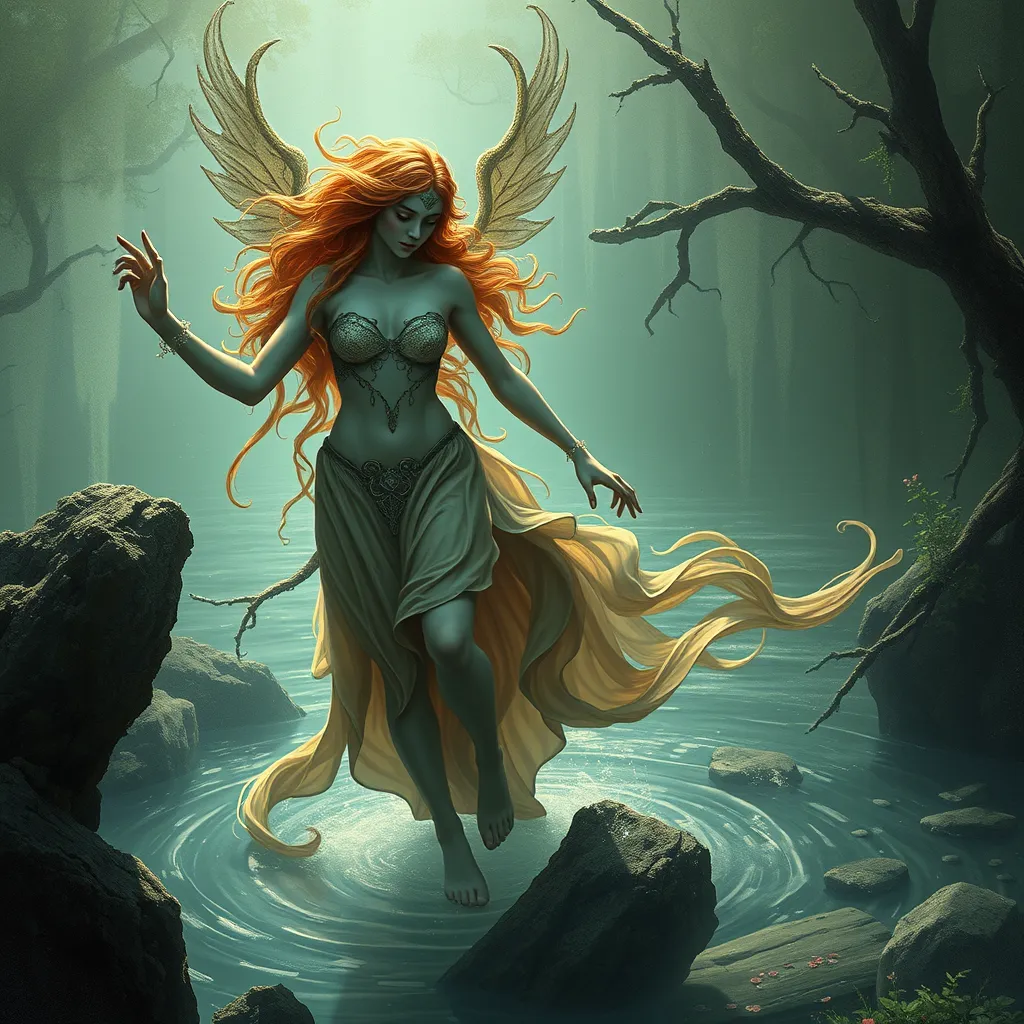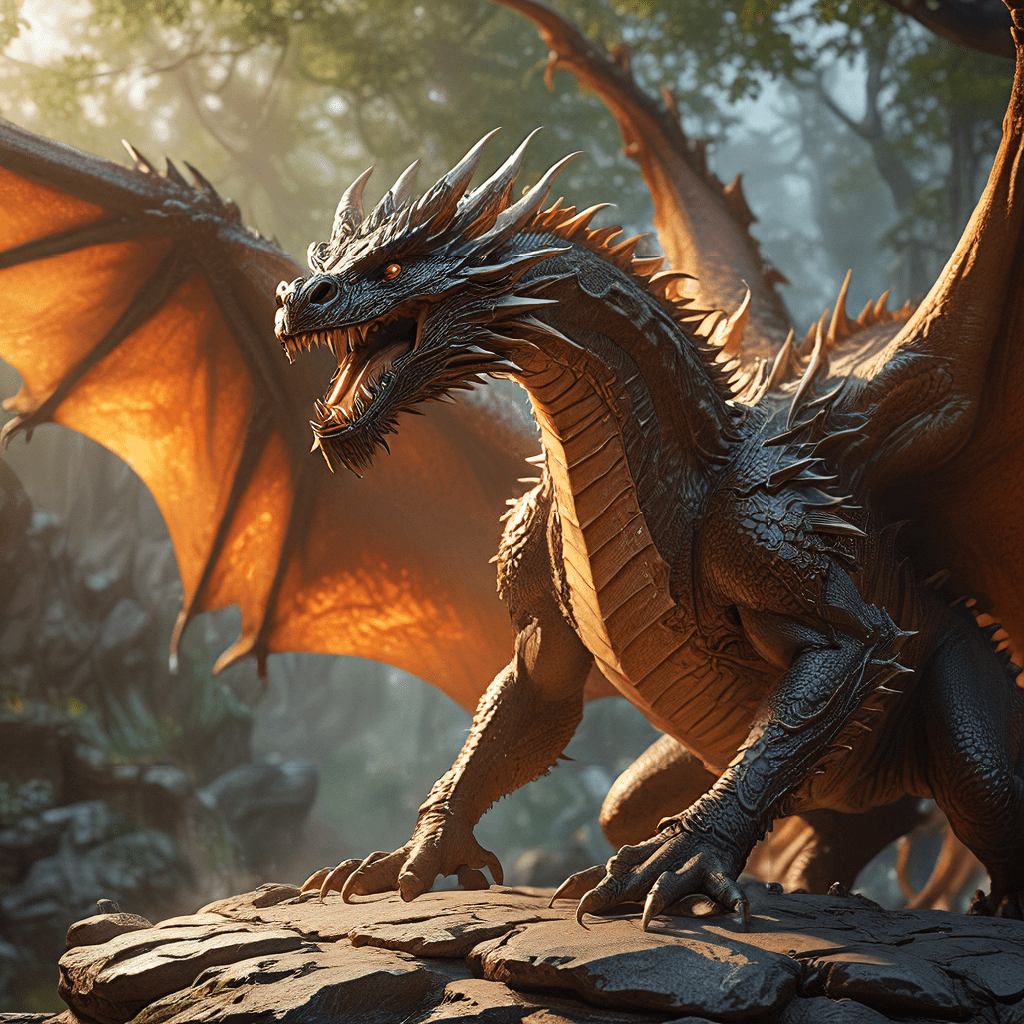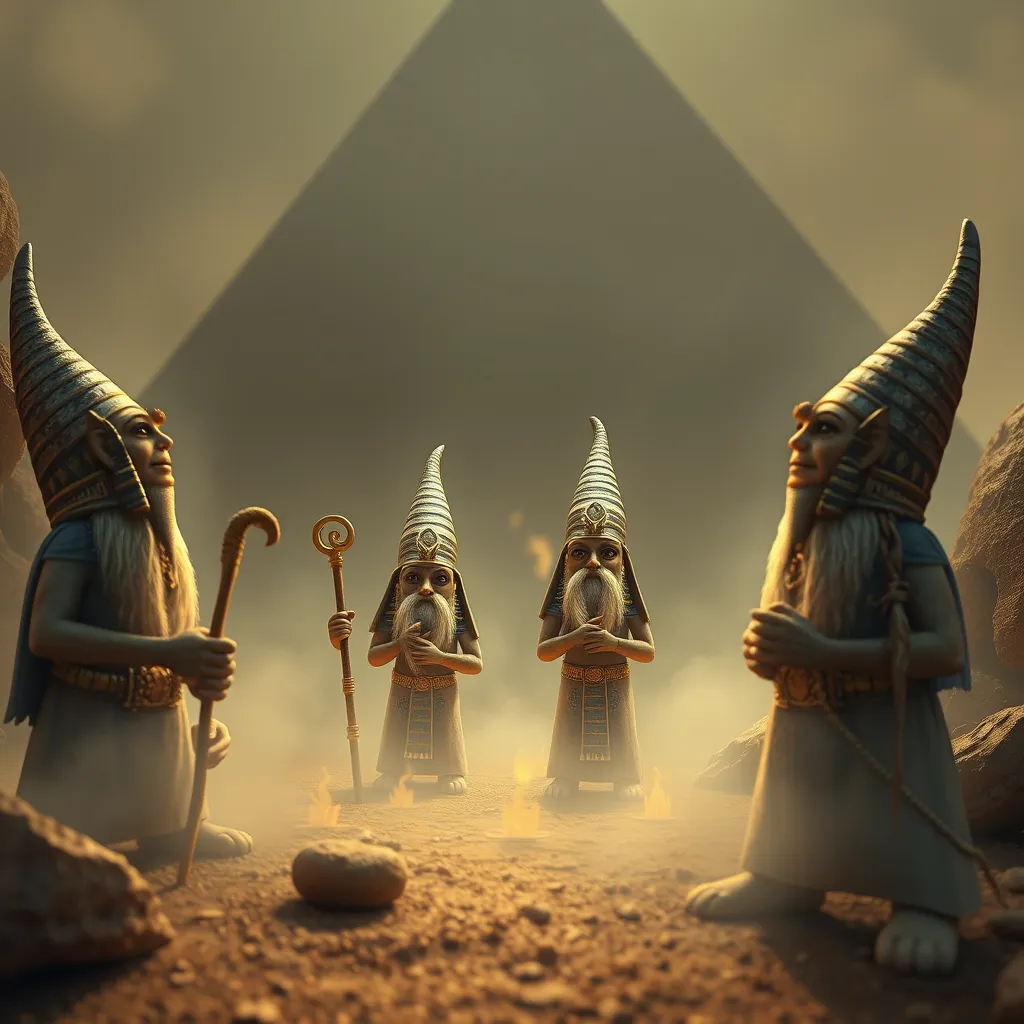The Nymphs of Slavic Mythology: Exploring the Rusalka and the Domovoi
I. Introduction to Slavic Mythology
Slavic mythology is a rich tapestry of beliefs, stories, and traditions that reflect the spiritual and cultural life of the Slavic peoples. It encompasses a wide range of deities, spirits, and mythical creatures, showcasing the connection between nature and the human experience. Among these beings, nymphs play a significant role in folklore, often embodying natural elements and human emotions.
This article aims to delve into two prominent figures within Slavic mythology: the Rusalka and the Domovoi. Through exploring their characteristics, roles, and interconnections, we can gain a deeper appreciation for Slavic folklore and its enduring legacy.
II. The Rusalka: Nature and Characteristics
A. Definition and origin of the Rusalka
The Rusalka is a water spirit or nymph commonly found in Slavic folklore. Originating from ancient Slavic beliefs, these beings are often associated with bodies of water such as rivers, lakes, and streams. Traditionally, a Rusalka is believed to be the spirit of a young woman who died tragically, often by drowning or in a manner related to water.
B. Physical appearance and symbolic representation
Rusalki are typically depicted as beautiful young women with long, flowing hair, often adorned with flowers. They are sometimes described as having greenish skin or scales, symbolizing their connection to aquatic environments. This enchanting beauty represents both the allure of nature and the dangers that lie within it.
C. The duality of the Rusalka: beauty and danger
While Rusalki are often portrayed as captivating and alluring, they also embody a sense of danger and unpredictability. Their enchanting songs can lure men to their watery graves, highlighting the dual nature of their existence. This ambivalence makes the Rusalka a complex figure within Slavic mythology, representing both the beauty of nature and its potential perils.
III. The Role of the Rusalka in Slavic Folklore
A. Rusalka in stories and legends
The Rusalka appears in numerous Slavic tales and legends, often serving as a cautionary figure. Stories depict her as a tragic heroine, longing for love or revenge against those who wronged her. These narratives often explore themes of love, loss, and the consequences of human actions.
B. Connection to water bodies and nature
In folklore, Rusalki are intrinsically linked to water bodies, where they are said to dwell. They are often depicted as guardians of lakes and rivers, protecting them from harm. This relationship underscores the importance of nature in Slavic culture and the reverence for water as a source of life.
C. Cultural interpretations and variations across Slavic cultures
Across different Slavic cultures, the interpretation of the Rusalka varies. In some regions, she is viewed as a benevolent spirit, while in others, she is seen as a malevolent force. This diversity illustrates the adaptability of folklore and its reflection of local customs and beliefs.
IV. The Domovoi: Guardian of the Home
A. Definition and origin of the Domovoi
The Domovoi is a household spirit in Slavic mythology, considered the protector of the home and family. Traditionally believed to inhabit the hearth, the Domovoi is seen as a benevolent guardian who ensures the well-being of the household.
B. Description of the Domovoi’s appearance and personality
Domovoi are often described as small, bearded men with a rough appearance, sometimes resembling old farmers. They are known for their kind disposition but can also be mischievous if disrespected. This dual nature reflects the complexities of domestic life and the need for harmony within the home.
C. The protective and mischievous nature of the Domovoi
As guardians, Domovoi play an essential role in the lives of families. They protect the home from evil spirits and misfortune. However, if they feel neglected or disrespected, they may engage in playful mischief, such as hiding household items or making noises at night.
V. The Role of the Domovoi in Daily Life
A. Significance in household rituals and traditions
The Domovoi is integral to various household rituals and traditions. Families would often leave offerings of bread or milk to appease this spirit, particularly during important occasions like births, weddings, or harvests. These practices highlight the cultural significance of the Domovoi in maintaining domestic harmony.
B. Relationship with family members and the importance of respect
Respecting the Domovoi is crucial for maintaining a good relationship. Families would tell stories about the Domovoi’s actions and ensure the spirit felt valued within the household. This connection fosters a sense of community and strengthens familial bonds.
C. Stories and folklore surrounding the Domovoi’s actions
- Many tales recount the Domovoi helping families during tough times, such as providing guidance during harvests or protecting children from harm.
- Other stories highlight the consequences of neglecting the Domovoi, illustrating the importance of maintaining a respectful household.
VI. The Interconnection Between the Rusalka and the Domovoi
A. Contrasting roles of the Rusalka and the Domovoi
The Rusalka and the Domovoi represent contrasting aspects of nature and human life. While the Rusalka embodies the beauty and danger of water, the Domovoi symbolizes domesticity and protection. Together, they illustrate the balance between nature and home in Slavic folklore.
B. Themes of nature, home, and community in their myths
Both the Rusalka and the Domovoi highlight the interconnectedness of nature, home, and community. Their stories reflect the importance of respecting natural forces while nurturing familial relationships, revealing deeper insights into Slavic cultural values.
C. Influence of the Rusalka and Domovoi on each other’s narratives
While their roles may differ, the Rusalka and the Domovoi influence each other’s narratives. The interactions between water and home, danger and protection, create a dynamic interplay that enriches Slavic mythology.
VII. Modern Interpretations and Cultural Legacy
A. The resurgence of interest in Slavic mythology today
In recent years, there has been a resurgence of interest in Slavic mythology, as scholars, artists, and enthusiasts explore these rich narratives. This revival reflects a growing appreciation for cultural heritage and the stories that shape identity.
B. Representation of the Rusalka and Domovoi in literature and art
The Rusalka and the Domovoi have found their way into modern literature, art, and media. They serve as symbols of cultural identity and resonate with contemporary themes of nature, spirituality, and community.
C. Impact on contemporary culture and folklore
As modern interpretations of Slavic folklore continue to emerge, the Rusalka and the Domovoi stand as enduring figures that inspire creativity and reflection. Their stories encourage a deeper understanding of the relationship between humanity and the natural world.
VIII. Conclusion
In summary, the Rusalka and the Domovoi are significant figures within Slavic mythology, each embodying unique aspects of nature and domestic life. Their contrasting roles, intertwined narratives, and cultural significance offer valuable insights into Slavic folklore.
Preserving Slavic mythological heritage is essential for understanding the cultural foundations of the Slavic peoples. As interest in these stories grows, it is vital to encourage further exploration and appreciation of the rich tapestry of Slavic folklore.
https://www.youtube.com/watch?v=ILla1hscE28



